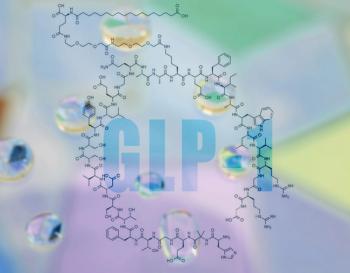
- Vol 42, Issue 11
Let’s Retire Haloperidol
Key Takeaways
- Haloperidol, a potent D2R antagonist, is linked to significant adverse effects, including neurotoxicity, movement disorders, and elevated prolactin levels.
- Second-generation antipsychotics (SGAs) are less neurotoxic and have fewer side effects compared to first-generation antipsychotics like haloperidol.
Explore the evolving understanding of haloperidol's risks and the shift towards safer alternatives in delirium management and psychiatric care.
FROM THE EDITOR
I was on call as the only psychiatric clinician in the hospital one Wednesday night during my psychiatric internship when a phone call was transferred to me. The caller was a nurse at a local long-term care facility requesting my guidance in managing a recently admitted older resident who had become increasingly agitated and distraught over the past 3 hours. Feeling unprepared and unsure, I phoned my back-up attending psychiatrist off-site and presented the case. His assessment and instructions took a mere 4 minutes. I was told that the patient was sundowning, and I should recommend 0.5 mg haloperidol (Haldol). I was surprised by how quickly and unceremoniously the attending was ready to recommend that agent but shared the news with the nurse. That was 1987.
Over the years since then, my experiences with haloperidol demonstrated why caution should be exercised when prescribing the agent. Haloperidol is a very potent dopamine-2 receptor (D2R) antagonist, with little activity at other receptors, and this is the property that treats psychosis and mania, but at the cost of significant adverse effects. For instance, a 28-year-old man diagnosed with schizophrenia presented who had been taking haloperidol for over a year, and complained of gynecomastia and no libido, all discovered to be secondary to a very elevated serum prolactin level, which is common with this agent. Chronic prolactin elevation also increases the future risk of osteoporosis and possibly breast cancer.
Then there was the patient who, in handcuffs, jogged in place nonstop, feeling like he literally had to jump out of his skin as a result of the monthly intramuscular injections of haloperidol (quite frankly, the worst case of akathisia I had seen).
Further, some patients in the intensive care unit had received haloperidol for delirium, despite the increased risks of movement disorders including acute dystonia, drug-induced Parkinsonism, and akathisia. They had the additional rare risks of neuroleptic malignant syndrome (NMS) and arrhythmogenic increases in their cardiac QTc interval, which could be lethal.
Neurotoxic Effects of Haloperidol
Haloperidol is a very old medication, developed by Paul Janssen, MD, in Belgium in 1958 and approved by the FDA in 1967. During my psychiatry residency training in the late 1980s, it was prescribed ubiquitously for wide-ranging symptoms and diagnoses. As time went on, concerns over haloperidol were being slowly addressed in health care settings. I recall vividly discussing delirium treatment in 2006 with my cousin’s wife, a critical care nurse in the cardiac intensive care unit (ICU) of a major medical center. When I asked her what they used to treat delirium, she matter-of-factly told me they used ziprasidone (Geodon) rather than haloperidol because ziprasidone had less of an effect on the cardiac QTc interval than haloperidol. (Very interesting, because a competitor at the time overdramatized the potential for ziprasidone to increase the QTc interval.)
I was pleased to hear that a move away from haloperidol for the treatment of delirium was underway, as I had become increasingly concerned about the potential neurotoxic effects of haloperidol in general, but especially in a medically compromised patient who was delirious in the ICU. We had learned that the high-risk time for many of the movement disorders, NMS (which has a high mortality rate), sedation, and cardiac toxicity occurs when an individual who had never been taking a potent D2R antagonist is initiated on one or has a significant dosage increase. Additionally, cognitive and negative symptoms, which are part of the neurodegenerative course of many individuals with schizophrenia, can be exacerbated by potent D2R antagonists, resulting in phenomenon secondary negative symptoms.1 Finally, because medically ill patients in an ICU commonly have multiple comorbidities (eg, renal, liver, and cardiac disease) and thus may be prescribed multiple medications, the plasma level of haloperidol may be impacted, and there are increased risks of drug-drug interactions.
Slowly, the medical literature began to support what I had been seeing clinically. By 2012, a preclinical literature had emerged demonstrating that first-generation antipsychotics (FGAs) were more neurotoxic than second-generation antipsychotics (SGAs). In one classic study, authors demonstrated that the FGA haloperidol significantly decreased cell viability and increased cell death when added to human neuroblastoma SK-N-SH cells, while 2 SGAs (risperidone and paliperidone) had no impact on cell viability or death.2
A few years later, Henry A. Nasrallah, MD, published a provocative editorial, reviewing the literature demonstrating FGAs’ neurotoxic effects. It provided a table of 15 neurotoxic molecular mechanisms of haloperidol as well as a bibliography of 28 publications demonstrating the toxic effects of haloperidol and other FGAs on the brain.3
In 2017, Nasrallah and Alexander T. Chen, MD, further explored the neurotoxicity. They wrote, “A neurotoxic effect of haloperidol and other FGAs was a common theme across all studies. Minimal (mainly at high doses) or no neurotoxic effects were noted in SGAs.” The authors hypothesized that potent binding affinity at the serotonin 5HT-2A receptor by the SGAs may contribute to their minimally observed neurotoxic effect.4
Updating Delirium Guidelines
I was encouraged by the increasing volume of published evidence that the FGAs had significant adverse events and brain toxicities, and I was expecting a rapid decline in their clinical usage once the SGAs emerged. In fact, by 2000, I rarely prescribed haloperidol, in large part due to my observations of the decrease in severity of these adverse effects by prescribing SGAs. The diverse menu of various serotonin receptor modulation of these SGAs, in addition to their continued dopamine-2 receptor antagonism, provided psychiatry with an array of medications with wide-ranging differences in mechanisms of action. (I would be remiss not to acknowledge the novel adverse effects that emerged with our use of these SGAs, which vary significantly from SGA to SGA and include weight gain, insulin dysregulation, hyperlipidemia, and somnolence. Additionally, the SGAs also can cause varying degrees of adverse effects similar to those of the FGAs, including akathisia, drug-induced Parkinsonism, risk of tardive dyskinesia, anticholinergic effects, and prolactin elevation.)
Imagine my surprise when, in 2021, I was preparing for an invited CME lecture on delirium and found that haloperidol was still considered the medication of choice in many publications. I even found a 2019 JAMA Psychiatry article that concluded, “This network meta-analysis demonstrated that haloperidol plus lorazepam might be the best treatment and ramelteon the best preventive medicine for delirium.”5 As previously described, haloperidol’s high potency as a D2R antagonist gives it a high propensity to cause significant motor adverse events. The treatment or management of these is usually an anticholinergic medication such as benztropine or diphenhydramine, both of which significantly increase the risk of delirium.
It has long been established that delirium is a syndrome resulting from global brain dysfunction with an extensive differential diagnosis. The treatment of delirium sounds simple enough: Identify and aggressively treat the primary cause. Often this is an extremely challenging task, because while the cause is hunted down, behavioral symptoms can emerge that require significant interventions, including the thoughtful use of medications.
Until this year, the most updated version of the American Psychiatric Association (APA) Practice Guideline for the Treatment of Patients With Delirium was from 1999. Although some content remains relevant today, a lot has been learned in the prevention, diagnosis, and treatment of delirium over the past 26 years. The most troubling and outdated guideline from 1999 was in regard to treatment6:
“Antipsychotic medications are the pharmacologic treatment of choice in most cases of delirium because of their efficacy in the treatment of psychotic symptoms. Haloperidol is most frequently used because of its short half-life, few or no anticholinergic side effects, no active metabolites, and lower likelihood of causing sedation.”
Catherine Crone, MD, chair of the APA Practice Guideline Writing Group, and colleagues were tasked with creating a new comprehensive guideline to prevent the development of delirium in patients at risk and to update the assessment and treatment planning recommendations. Although the guidelines were approved by the APA Board of Trustees in November 2024, they were not officially published until September 1, 2025.7,8 One notable recommendation in the updated guidelines is to use dexmedetomidine to prevent delirium in some settings and as the agent of choice in a critical care setting when sedating a patient with delirium for mechanical ventilation (
At this year’s APA Annual Meeting, I had the privilege of interviewing Mark A. Oldham, MD, associate professor of psychiatry at the University of Rochester Medical Center, and one of the authors of these updated guidelines.9,10 During our discussion, Oldham said that one of the most significant changes was the focus on preventing delirium through nonmedication protocols, adding that 40% of all deliriums are preventable. Additionally, he emphasized that antipsychotic medications are not recommended for the treatment or prevention of delirium or for managing delirium itself. Rather, only when agitation or a discreet neuropsychiatric disturbance such as perceptual distortions causing significant distress are present in a patient with active delirium should an antipsychotic medication be used (Figure) and for the shortest time possible. One of his comments that really resonated with me was that “delirium is not an antipsychotic deficiency syndrome.”
Concluding Thoughts
Imagine a general surgeon operating with the protocols and surgical instruments of 1967 or having a consultation with a neuro-oncologist using chemotherapy and radiation protocols from the 1990s. It is not a stretch to conclude that somehow, we in psychiatry find ourselves lost in the outdated paradigm of prescribing FGAs. There will always be a few exceptions to this generalization, but overall I believe it to be accurate.
Twelve years ago, Nasrallah, a respected thought leader in psychiatry, rang the warning bell about haloperidol and FGAs but, for reasons that I do not understand, very little has changed. The new APA guidelines on the prevention and treatment of delirium are ringing another warning bell for us. These updated guidelines have expanded the list of recommended antipsychotic medications to be used only when criteria are met to include the SGAs aripiprazole, olanzapine, quetiapine, risperidone, and ziprasidone along with, yes, haloperidol.
With so many better tolerated alternatives available to us, my recommendation is to place haloperidol and other FGAs into semiretirement and thank them for being available when they were all that we had.
References
1. Mosolov SN, Yaltonskaya PA.
2. Gassó P, Mas S, Molina O, et al.
3. Nasrallah HA.
4. Nasrallah HA, Chen AT.
5. Wu YC, Tseng PT, Tu YK, et al.
6.
7. Crone C, Fochtmann LJ, Ahmed I, et al.
8. Clinical practice guidelines. American Psychiatric Association. Accessed October 20, 2025.
9. Oldham MA, Crone C, Fochtmann L. Applying recommendations to the real world: a clinically focused review of the updated APA clinical practice guidelines for delirium. Presented at: 2025 American Psychiatric Association Annual Meeting; May 17-21, 2025; Los Angeles, CA.
10. Oldham MA, Miller JJ. New delirium guidelines discussed at APA annual meeting. Psychiatric Times. May 20, 2025.
Articles in this issue
27 days ago
Interrelation of Hormones and Adult ADHDabout 1 month ago
The Future of ADHD Care: Redefining Adult Diagnosis and Treatmentabout 1 month ago
ADHD: Correcting Careless Mythsabout 1 month ago
Polypharmacy in Clozapine-Treated Patients: A Retrospective Analysisabout 1 month ago
Lamotrigine: An Update on Its Role in Bipolar Disorderabout 1 month ago
After Reading Music from Apartment 8about 1 month ago
Placebo Response Rates Vary Across Psychiatric DisordersNewsletter
Receive trusted psychiatric news, expert analysis, and clinical insights — subscribe today to support your practice and your patients.













